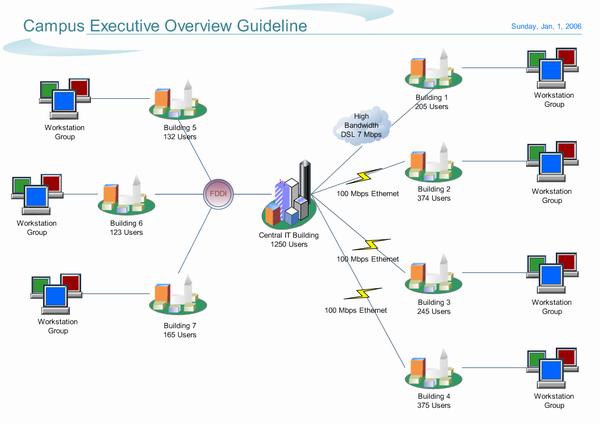Wide area network technology
Introduction
The following listings are listed below the corresponding relationship between the WAN technology with the OSI reference model.
Point-to-point link
Point-to-point link provides a widely established WAN communication path from the client to the remote target network to the remote target network. A point-to-point link is a leased line that can establish a permanent fixed connection between the data transceiver. Network operators are responsible for the maintenance and management of point links. Point-to-point links can provide two data transfer methods. One is a datagram, which is mainly to divide data into a small data frame for transmitting, where each data frame has its own address information, and an address check is required. The other is a data stream delivery method, which is different from the data report, and the data frame is replaced by a data flow as a data transmission unit, and the entire stream data has one address information, only one address verification is required. The following figure shows a typical point-to-point link that spans the WAN.
Circuit Exchange
circuit exchange is a switching method used by the WAN. A dedicated physical circuit can be established, maintaining and terminating a dedicated physical circuit through the operator network. Circuit exchange can also provide two transmission methods of data reports and data streams. Circuit exchange is widely used in the network of telecom operators, and its operational processes are very similar to the ordinary telephone dialing process. The Integrated Business Digital Network (ISDN) is a wide area network technology using circuit exchange technology.
Pack exchange
package exchange is also a wide area online frequently used switching technology, through the package exchange, network devices can share a point-to-point link through the operator network between devices Delivery of the packet. The package exchange mainly uses statistical multiplexing technology to achieve circuit sharing between multiple devices. ATM, frame relay, SMDS, and X.25 are widely available network technologies using packet switching technology. The schematic diagram of the package exchange on the WAN is:

Virtual circuit
virtual circuit is a logic circuit, can be reliable between two network devices Communication. Virtual circuits have two different forms, which are exchange virtual circuits (SVCs) and permanent virtual circuits (PVCs).
SVC is a virtual circuit that is dynamically established in accordance with the requirements. When the data transfer ends, the circuit will be automatically terminated. The communication process on the SVC includes three phases, traffic, data transmission, and circuit termination. The circuit creation phase is mainly to establish a virtual circuit between the communication between the communication; the data transmission phase transmits data between the device through the virtual circuit; the circuit termination phase is the virtual circuit that has been established between communication devices. SVC is mainly suitable for non-normal data transfer networks because the SVC needs to take up more network bandwidth in the circuit creation and termination phase. However, relative to the permanent virtual circuit, the cost of SVC is low.
PVC is a permanent virtual circuit that has a pattern of data transmission. PVC can be applied to a frequent network environment of data transfer because PVC does not need to use additional bandwidth to create or terminate the circuit, so the utilization rate of bandwidth is higher. However, the cost of permanent virtual circuit is higher.
WAN device
In a wide area network environment, a variety of different network devices can be used, and we focus on some commonly used wide area network devices.
WAN Switch
WAN Switch is a multi-port network interconnect used in the carrier network. WAN switches work on the data link layer of the OSI reference model, which can operate data traffic such as X.25 and SMDS. The figure below shows a schematic diagram of two routers located at both ends of the WAN via a wide area network switch.
Access server
Access server is a convergence point that is dial in a wide area network. The figure below illustrates how the access server adds a plurality of dial-out connections to access the WAN.
Modem
The modem is mainly used between the transformation between numbers and analog signals, so that data information can be transmitted through voice lines. At the data transmitter, the computer digital signal is converted to a form suitable for transmitting by analog communication devices; while the target recipient, the mode signal is reduced to a digital form. The figure below is a simple connection between the modem across the WAN.
CSU / DSU
Channel Services Unit (CSU) / Data Services Unit (DSU) Similar data terminal devices to data communication devices, The following aspects can be provided: signal regeneration, line adjustment, error correction, signal management, synchronization, and circuit testing. The figure below shows the implementation of CSU / DSU under WAN.
ISDN Terminal Adapter
ISDN Terminal Adapter is used to connect ISDN basic rate interface (bri) to other interfaces, such as EIA / TIA-232 . In essence, the ISDN terminal adapter is equivalent to an ISDN modem. The following figure shows the placement of the terminal adapter in an ISDN environment.
Latest: H / O







